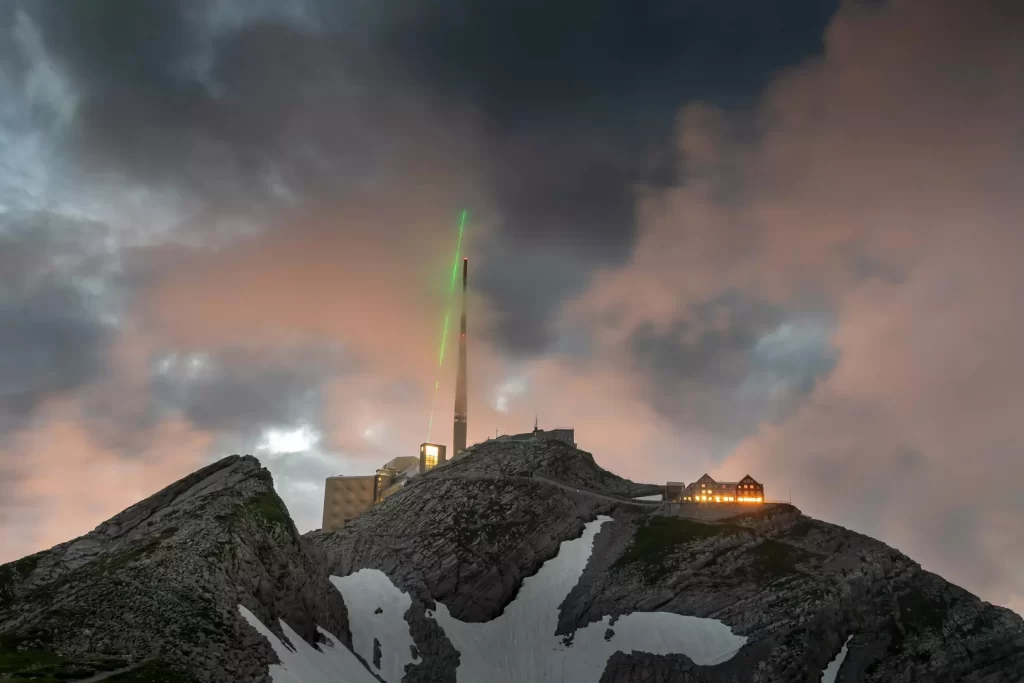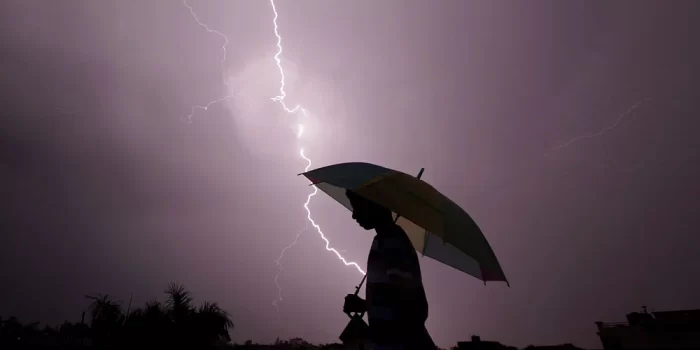Like Zeus hurling thunderbolts, physicists working on a Swiss hilltop have used a high-powered laser to steer lightning. According to the researchers, the breakthrough could pave the way for the use of lasers to defend airports, rocket launchpads, and other sensitive infrastructure. Still, it’s unclear whether the million-dollar gadget is any more effective than a cheap lightning rod.
Every year, lightning strikes between 40 and 120 times per second, killing over 4,000 people and causing billions of dollars in damage. However, the most effective defense against these bolts from the sky is still the basic lightning rod, which was invented in 1749 by American polymath Benjamin Franklin.

“When very high-power laser pulses are emitted into the atmosphere, filaments of very intense light form inside the beam,” said Jean-Pierre Wolf, the last author of the study. “These filaments ionize the molecules of nitrogen and oxygen present in the air, which then release free electrons to move.” This ionized air, called “plasma,” becomes an electrical conductor.
To showcase the concept, the researchers created a novel laser system with an average power of 1 kW that pulses around 1,000 times per second and releases one joule of energy per pulse. This was installed on the summit of Säntis in the Swiss Alps, near a tower that receives approximately 100 lightning strikes every year.

The concept of utilizing lasers as lightning rods has been around for a long time and has shown promise in lab studies, but according to the team, this is the first time it has been proven in the real world. Other researchers have argued that graphene tractor beams could do a better job, although this would necessitate more complicated setups.
According to the researchers, the ultimate goal of the LLR project is to utilize a laser to expand the influence of a 10-meter lightning rod by 500 m (1,640 ft).


